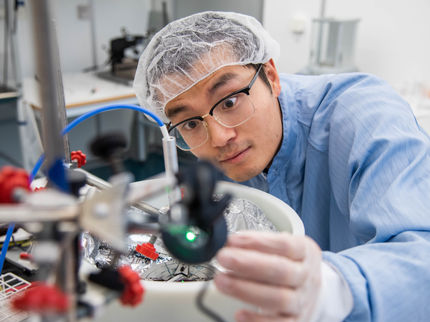Ketchup turns somersaults
Scientists develop a numerical model of complex fluids
Advertisement
Blood, paint or ketchup are complex liquids composed of several different components. For the construction of pumps, or the improvement of technical processes scientists and engineers need description models. They make the special properties of such liquids predictable. Researchers at the Technische Universitaet Muenchen (TUM) and the Federal Institute of Technology Zurich (ETHZ) have developed such a model.
The unusual behavior of complex fluids is part of our daily life: cake dough climbs up the stirring bar, ketchup becomes liquid when you shake it. Also technology uses such phenomena: if we add a small amount of long-chained polymer molecules, a pipeline can transport more oil. The polymers reduce the flow resistance. But up to now the origin of these effects was unclear. The engineers had to rely on estimates and lengthy trials.
A team of physicists led by Professor Andreas Bausch, Chair of Cellular Biophysics at TUM now developed a numerical model of such liquids. Experimental heart of the work are a fine flow channel and a micro-camera. Like the camera looking down at the pit lane of Formula 1 races, the scientists monitored the movements of individual polymer molecules in the flow.
From their observations they conducted a theoretical model for the motion of rigid molecules different from the current. In addition, they were able also to provide for colleagues suspected of movement patterns experimental confirmation.
Challenging for theory and experiment
“Due to the incredibly large number of degrees of freedom the study and description of the motion of polymers is a big challenge,” says Markus Harasim, one of the two main authors. Even a simple system of water and polymer shows the effects of complex fluids. In order to make the long molecules visible, the physicists marked the polymers with a fluorescent dye. This allowed them to study the movements under various conditions.
To their surprise the mathematical modeling showed, that even the simple model of a stiff rod was suitable as a starting point. Then the researchers refined the model by taking into account the thermal motion, the flexibility of the molecule and the higher flow resistance of a curved polymer. “Since we now know the microscopic mechanisms, we can extend the model to more complex geometries and flows. And thanks to our experimental set-up we should be able to verify our theories,” says co-author Bernhard Wunderlich, who is a well known rapper in the hip-hop band “Blumentopf” in his off time.
Original publication
Markus Harasim, Bernhard Wunderlich, Orit Peleg, Martin Kröger, Andreas Bausch, Direct Observation of the Dynamics of Semiflexible Polymers in Shear Flow, Physical Review Letters, 2013































































